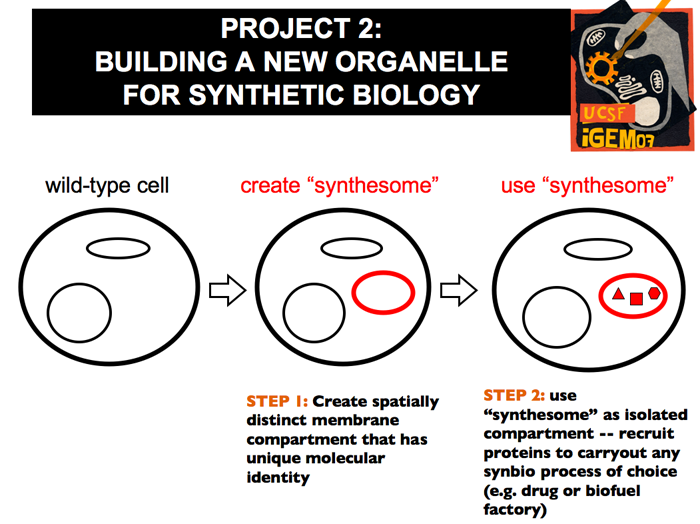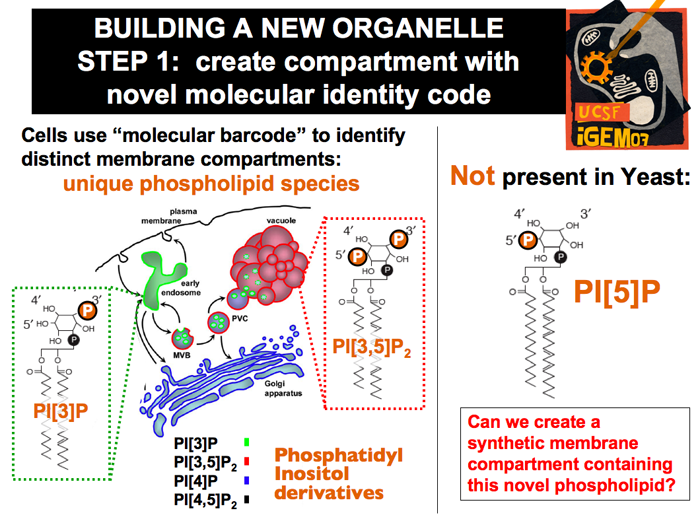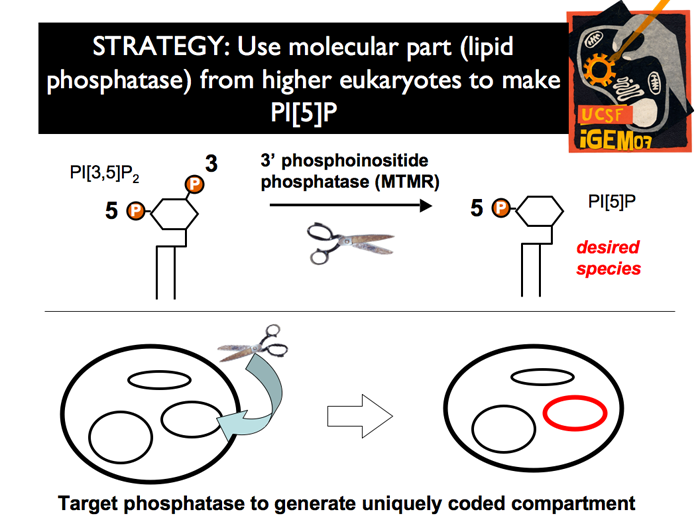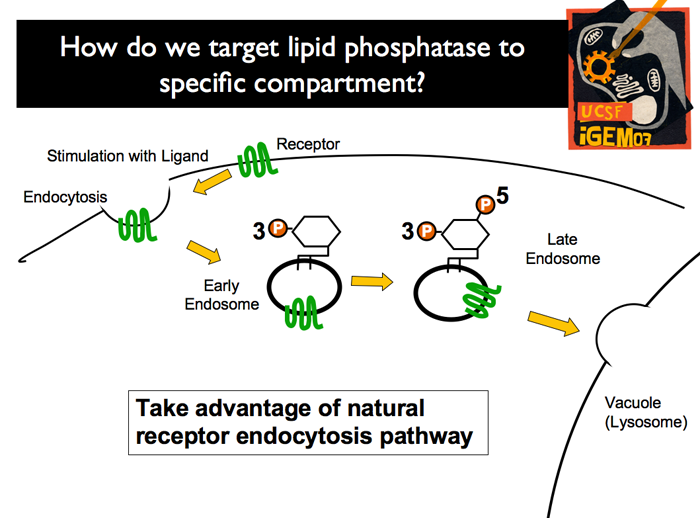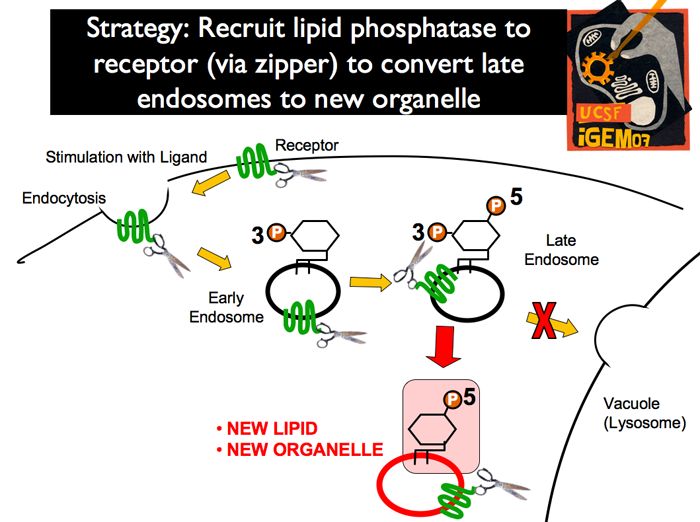UCSF/Organelle Intro
From 2007.igem.org
(Difference between revisions)
| Line 2: | Line 2: | ||
|[[Image:Picture_31.png]]||'''The existence of different organelles bound by distinct membranes necessitates a system by which the cell can distinguish different membrane locations. One of the most well-understood methods of tagging such membranes is the phosphoinositide system. Phosphoinositides are lipids that make up a small percentage of membranes. They consist of a hydrophobic tail and an inositol sugar head that can be phosphorlyated in 3 positions.''' | |[[Image:Picture_31.png]]||'''The existence of different organelles bound by distinct membranes necessitates a system by which the cell can distinguish different membrane locations. One of the most well-understood methods of tagging such membranes is the phosphoinositide system. Phosphoinositides are lipids that make up a small percentage of membranes. They consist of a hydrophobic tail and an inositol sugar head that can be phosphorlyated in 3 positions.''' | ||
|- | |- | ||
| - | |[[Image:Picture_32.png]]'''In yeast, there are no insositides tagged solely at 5’ position.''' | + | |[[Image:Picture_32.png]]||'''In yeast, there are no insositides tagged solely at 5’ position.''' |
|- | |- | ||
|[[Image:Picture_33.png]]||'''Because of this, if we created this new tag in a specific location, we would theoretically obtain a modified vesicle to serve as a chassis for subsequent recruitment of other proteins, which through modular domains will be able to bind only to the desired phosphoinositide.''' | |[[Image:Picture_33.png]]||'''Because of this, if we created this new tag in a specific location, we would theoretically obtain a modified vesicle to serve as a chassis for subsequent recruitment of other proteins, which through modular domains will be able to bind only to the desired phosphoinositide.''' | ||
